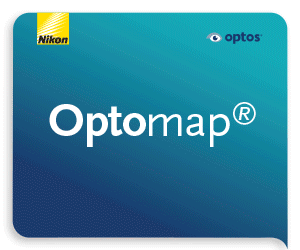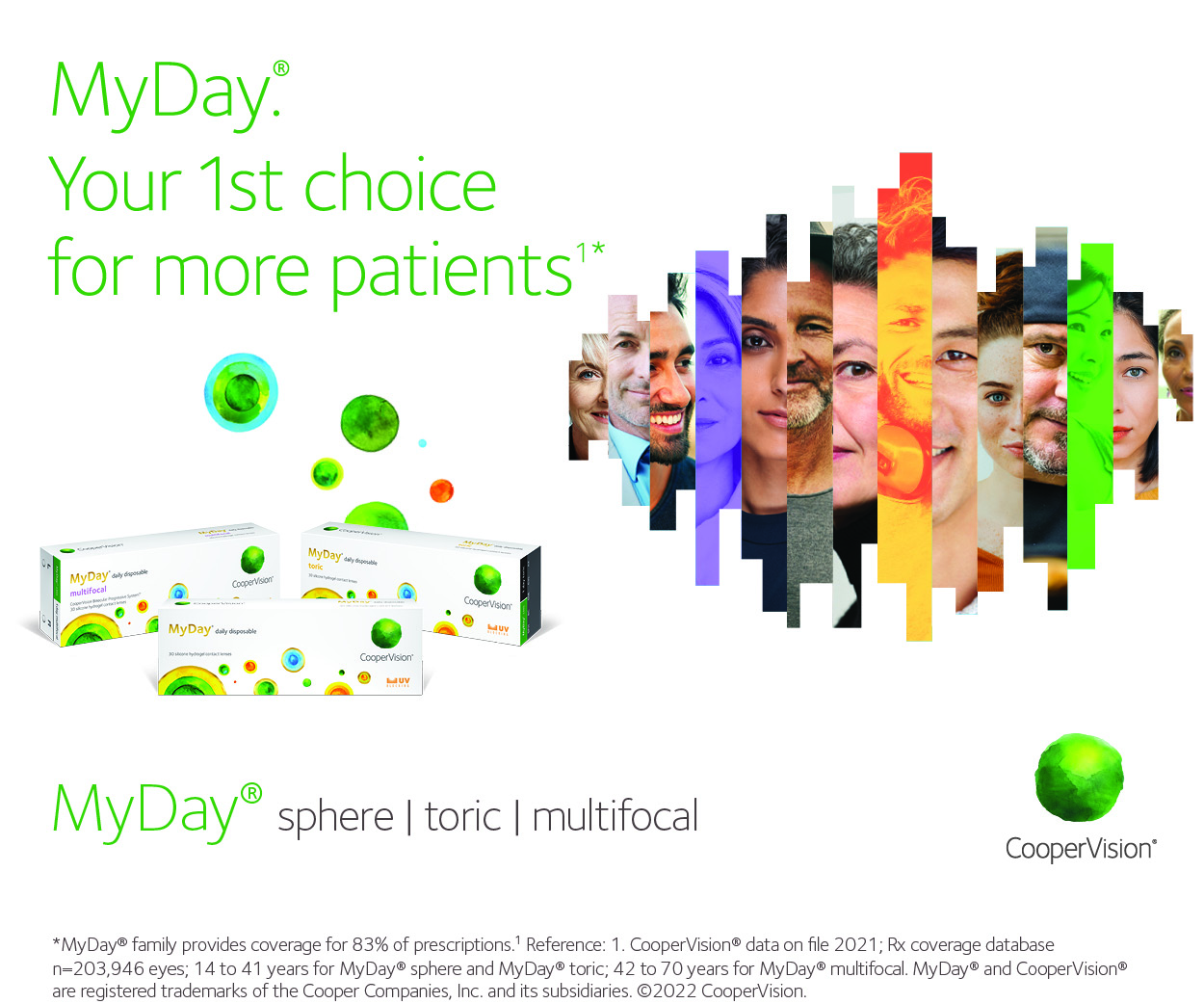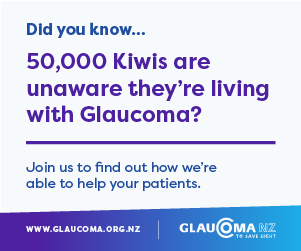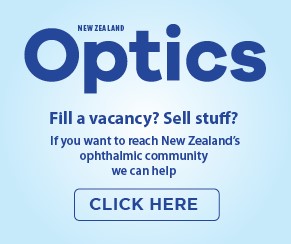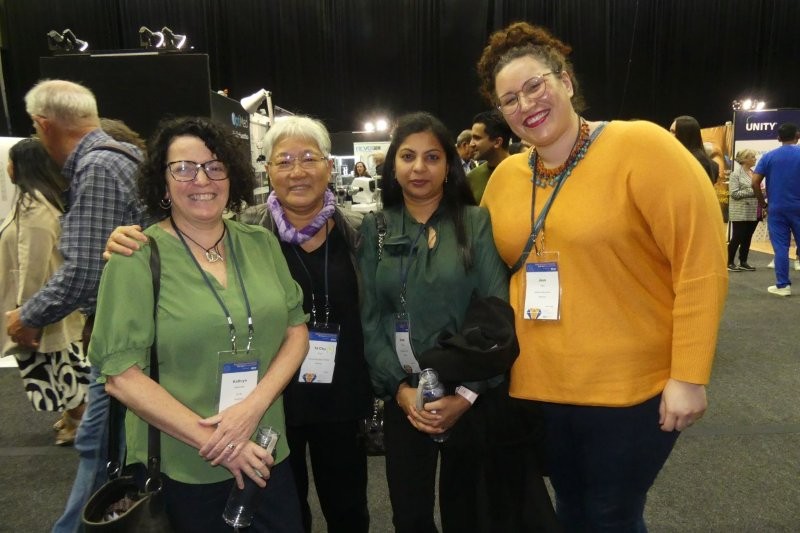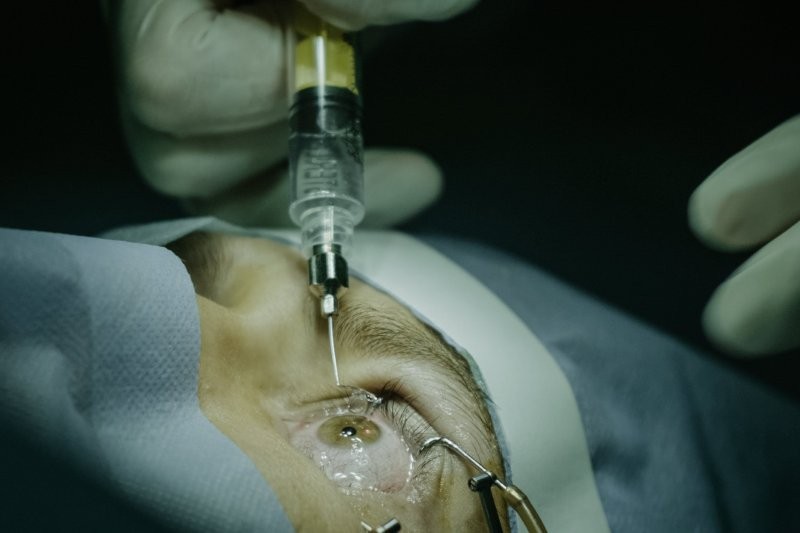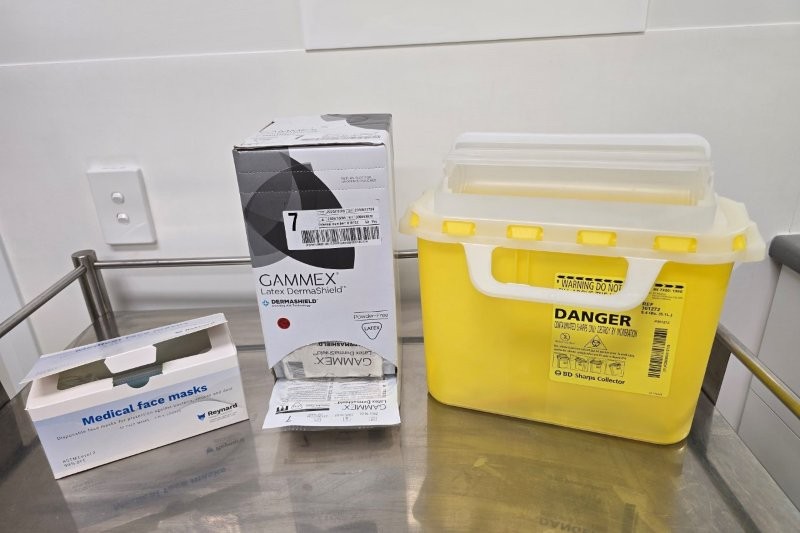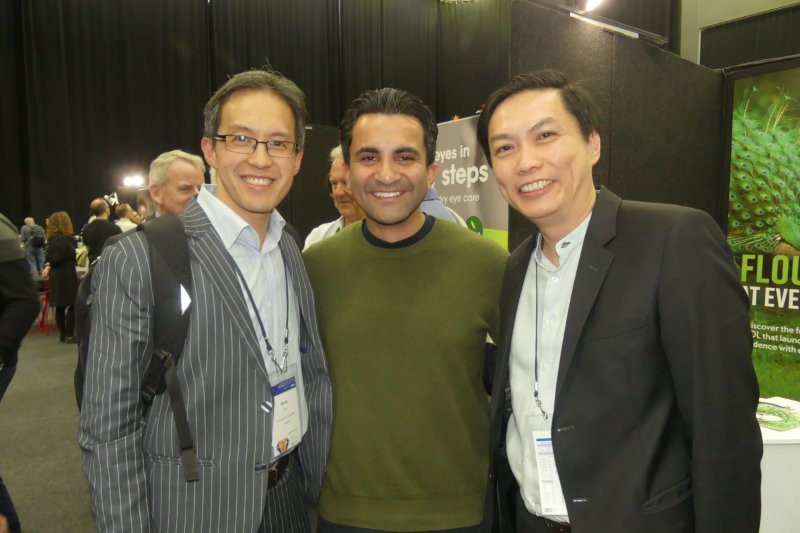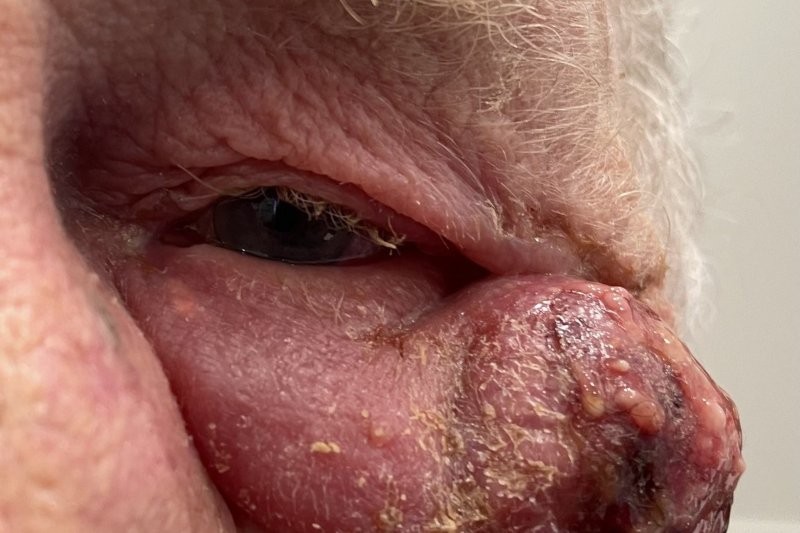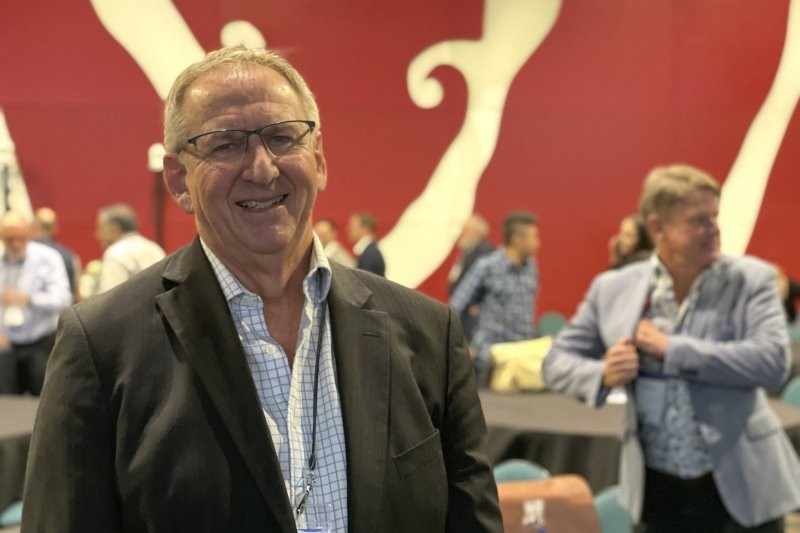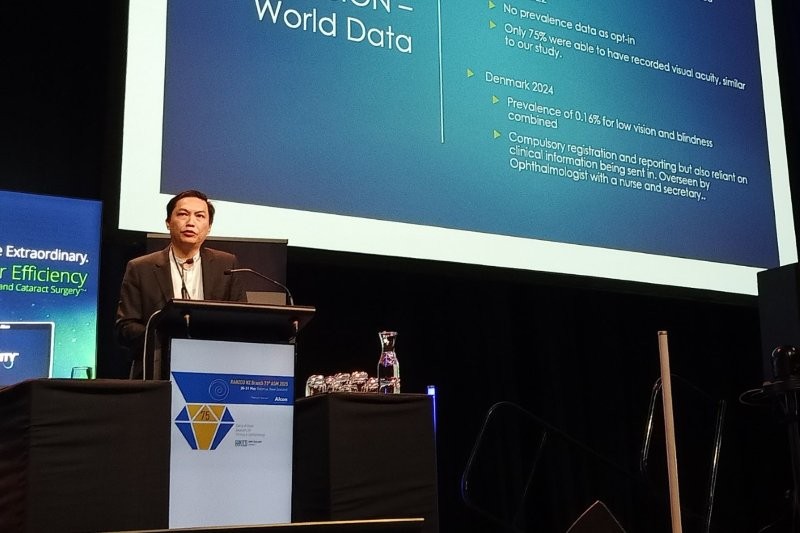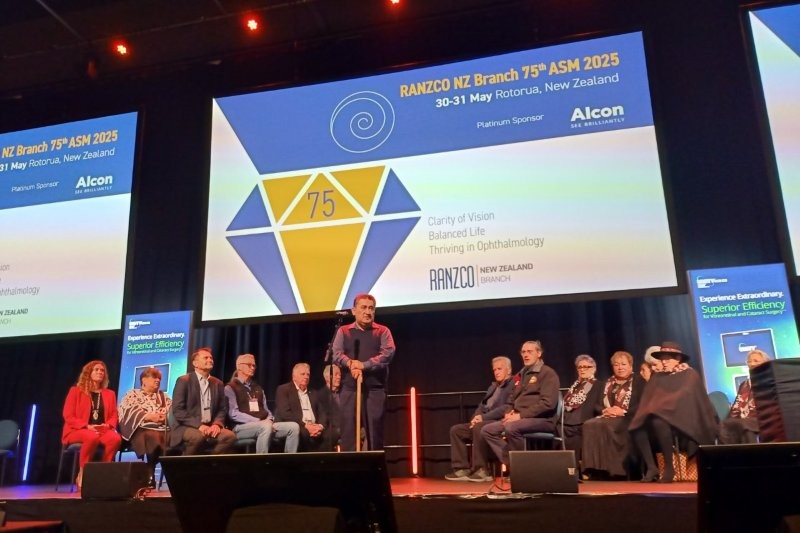Remain calm and thrive in ophthalmology
Attendees of the RANZCO NZ conference this year were welcomed to Rotorua by a beautiful mihi whakatau from the Ngāti Whakaue Te Arawa people. Dr Liz Insull, NZ Branch chair, then gave special thanks to Dr Verona Botha, this year’s conference organiser, and scientific chair, Professor Charles McGhee for curating the diverse, interesting and enjoyable scientific programme. This is a snapshot of some of my personal highlights from the two-day event.

Penny Wilson, Dr Verona Botha and Arina Khramenko
The first of the plenary speakers was international keynote, Professor Soon-Phaik Chee from Singapore, who discussed the challenges of managing various complex types of cataract and the importance of documenting the type in your clinical findings, providing important tips for increasing the surgeon’s confidence such as the use of anterior segment OCT for dense cataracts and various surgical techniques minimising anterior capsule rip and zonular weakness. Her surgical videos were outstanding!
Professor Laura Balcer from New York advised that optic nerve inflammation (optic neuritis, ON) is now part of the formal diagnostic criteria for MS; however, she argued that ON remains a clinical diagnosis. This was illustrated by a clinical presentation of eye pain in a patient known to have MS but with no other ON symptoms. Clinical exam was unremarkable; however, a very subtle area of optic disc swelling was noted on OCT. OCT imaging has revolutionised eyecare, she said, noting that more patients with ON will have optic disc swelling than previously thought. Another tip that I will remember is that patients with ON often mention pain when applying eye makeup. Prof Balcer also recommended requesting orbital MRI for MS/ON patients to gain a full picture of diagnostic findings.

Elainee Calimag, Qingfeng Ren, Melinda Lynch,
Liz Kupa, Ruby Ripley and Priya Gounder
San Franciscan keynote Associate Professor Julie Schallhorn told us about recent research on the rapidly evolving world of intraocular lens (IOL) technology for the correction of presbyopia. She stressed the importance of counselling patients regarding potential outcomes; eg. they may experience reduced glare with a particular IOL. However, their overall vision may not be improved, so what is important to the patient is of utmost importance in the IOL selection, she said.
The plenary ended with a from-the-heart account by motivational speaker Dani Fennessy about her personal experience of idiopathic intracranial hypertension, including the rare complication of vision loss. She reminded us of our important role in not only protecting vision but also for protecting people’s futures. I was inspired by her quote “make time for your health before you have to make time for sickness”.

Anna Weber, Primrose Kurira and Carol Epapara
Great mix of nursing talks
Over 80 nurses attended in person and more than 15 virtually. Renee Stapleton from Waikato Hospital Eye Clinic had put together a fantastic programme with lots of nurses presenting and a good mix of topics from clinics and theatre, case studies, nursing research and expanding ophthalmic nursing roles. I began the session with an overview of herpes zoster ophthalmicus, including an update from ZEDS (the Zoster Eye Disease Study), whose recommendation was that prophylactic use of oral valacyclovir 1,000mg per day reduces recurrences of ocular inflammation and post-herpetic neuralgia.
With World No Tobacco Day on 31 May, Lyn Scott from Waikato Eye Clinic gave us a poignant reminder about the effects of both smoking and vaping on the eye. I was surprised to hear it takes more than 10 years after stopping smoking to reduce these risk factors. Hopefully, armed with this knowledge, we can all help our patients to understand the risks and encourage them to stop earlier rather than later, or preferably not to start at all.

Shweta Chandra, Roshini Patel and Bhagya Katke
For the first time at this conference, we were fortunate to have prizes for the best nurses’ presentations, which was very exciting! Auckland’s Dena D’Souza was runner-up (winning $500) with a talk on her involvement in a new ocular prosthesis service at Greenland Clinical Centre – a great new initiative reducing the number of visits patients need to have their ocular prosthesis made and also leaving with the prosthesis the same day! I was as surprised as many others to learn that ocular prosthetics were first made by Romans in the 5th century BC, albeit from clay and worn over the socket!
The first prize ($1,000) went to Tara McLennan, Waikato Hospital Eye Clinic, for her post-graduate research reviewing patient diabetes and tips on how to improve patient engagement and education. Patients in her clinic wanted more resources to understand their conditions better and to know what resources were available to them. She also shared a survey result about nurses’ knowledge of diabetes management that encouraged us to improve our understanding and introduce meaningful changes to patient care.

Medix21’s Julian Knaggs with Tara Mudgway,
Debbie McMahon and Freya White
Strong representation from theatre
There was strong representation from our ophthalmic theatre colleagues this year.
Featured speaker for the nursing programme Lori Pacheco from Boston was clearly passionate about health and safety and, in particular, sterilisation of instruments and maintaining a safe environment. The first of her talks was a comprehensive overview of the how, what, when and why of handling hazardous drugs, which discussed the difference between guidelines and standards. In a nutshell, guidelines are recommendations and are not enforceable, while standards are requirements from the Ministry of Health. She offered tips for handling hazards, ie. to have a designated person, standards of practice and plans in place for spill management, storage and disposal, PPE requirements and to be aware of what happens to the different types of waste bins. Are they managed locally or sent overseas? Are they buried or burnt? This will help us to be sure of what type of waste goes into each bin.
Pacheco’s next talk was on instrument sterilisation, reviewing industry guidelines, stressing the importance of following manufacturers’ instructions for use, cleaning and sterilising instruments. She said if an instrument came from the manufacturer in separate pieces then it should be cleaned and sterilised in separate pieces as well and remember to check if tap water is safe to rinse instruments in. Everything in the process has to be compatible, from containers to sterilisers; I certainly made myself a list of things to check when I get back to clinic! Top tip: a pencil eraser can remove rust from instruments before cleaning and sterilising.
Pacheco also gave a wonderful update of teaching, research and community outreach with her presentation on Orbis, an international nonprofit organisation that provides ophthalmic care and training and runs a flying hospital to reach more remote areas.

Jessica Houston and Justine Millar with Nurses Meeting
keynote Lori Pacheco and Sally Caldwell
Continuing with the surgical theme, Penny Wilson and Arina Khramenko, Eye Surgeons NZ, gave an account of their role as oculoplastics nurses and in the management of surgical patients in a busy private practice, including triaging referrals, pre-op assessments, assisting and supporting in the perioperative phase and comprehensive post-op assessment and support, including removal of sutures and chasing histology. They summarised that they are masters of sterilising, procurement, marketing and caffeination of their surgeons.
Jillian Blakely, Eye Surgery Associates, spoke of the important attributes for ophthalmic theatre nurses in supporting the surgeon and being able to act effectively if complications occur. She shared a rare case of choroidal haemorrhage when a patient coughed during routine cataract surgery. Fortunately, the team acted quickly to wrap up the surgery to minimise the impact on the patient’s eye. A good tip for all clinical practice was to “know the norm so you can recognise when something goes wrong”. She inspired us all with her mottos: “be prepared” and my favourite, “Better to be looking at it than looking for it!”.
Back in the plenary session, Pacheco presented on TASS (toxic anterior segment syndrome), which is rare but devastating. She told of a case where a single scrub nurse, who was found not to be following the same process with surgical instruments as others, caused a number of TASS cases. The key message was the importance of a high standard of instrument cleaning and sterilisation and appropriate identification and management of any source of infection.

Ali Fellowes, Jillian Blakley and Liz Lubbers
IVIs to the fore
Of course, an ophthalmology conference wouldn’t be complete without discussing intravitreal injections (IVIs)! Dr Sophie Hill, Eye Institute, updated us on an exciting new drug, faricimab, that is showing promise in her small cohort of 10 patients, with less frequent injections generally indicated. While it has been found to be good for neovascular age-related macular degeneration (nAMD), it may not be as effective for retinal vein occlusion. She concluded that if faricimab is funded, it could be a good second-line treatment for nAMD.

Roche’s Jenny Patchell with Walieke Barran and Tamsyn Clark
Dr Tulay Cakiner-Egilmez Zoomed in from Boston to clarify glaucoma and associated risk factors; it is estimated 50% of people with glaucoma are unaware they have it. She outlined a theory that increasing risk with increasing age may be due to thinning of the trabecular meshwork, iris and lens. She said low blood pressure may be the mechanism in normal tension glaucoma due to reduced blood flow to the optic nerve and shared some tips on assessing anterior chamber angle depth, eg. the Van Herick assessment, penlight and smartphone flash.
And in brief…
Waikato Hospital’s Lyn Scott talked about a change in her IVI practice, reviewing waste and the impact on the environment, recycling as much as possible from the packaging and discussed the cost of instruments, sterilisation and consumables.
Dr Cakiner-Egilmez showed an at-home device for patients to check IOP, which raised a question for me, will we rely on more self-assessment by patients in the future to manage the increasing health burden?
Sarah Berman, Macular Degeneration New Zealand (MDNZ) general manager, said the latest AMD awareness research found that major barriers for patients engaging in seeing an eyecare professional were costs associated with the check and glasses, accessibility, and anxiety about what would happen and what the outcome would be.
PhD candidate Esmeralda Lo Tam, who runs a Mana Vision Pasifika Facebook page, shared her vision to promote organ donation and her personal corneal graft surgery experience, stressing the importance of communicating with the patient regardless of their age.
And the last words go to Prof Chee, who gave the John Parr Medal Lecture covering very complex cataract surgery. We were all entertained when she was asked about her techniques for stress management, but clearly she didn’t seem to have stress because her advice was “just remain calm”!
Remaining calm was temporarily hindered for me by a precarious gondola trip to the Skyline Rotorua gala dinner, but was restored with the stunning view once up there and, of course, by the social side of things where we had the chance to take a breath and catch up with our wonderful colleagues. Remaining calm seems like good advice for us all!
Kathryn Millichamp is a nurse practitioner with more than 24 years of experience in ophthalmology nursing. She is currently practising in the out-patient clinics at Te Whatu Ora Te Toka Tumai Auckland and is a member of the Eye Health National Clinical Network.




